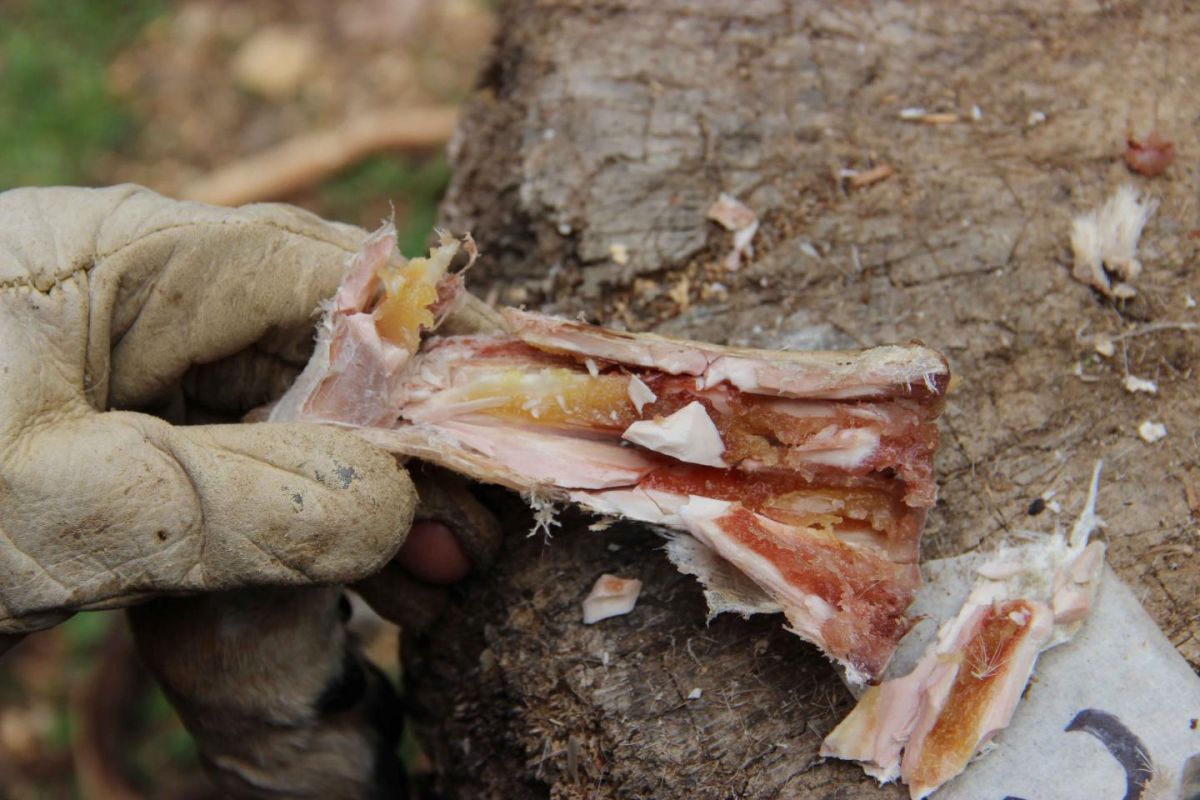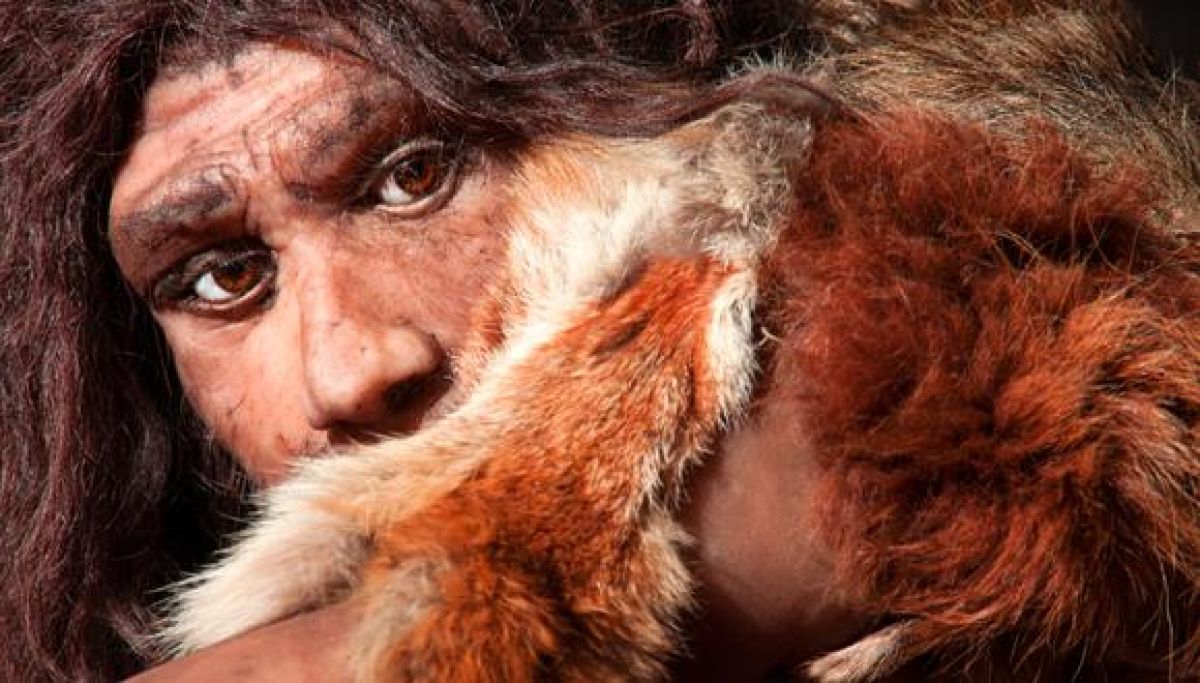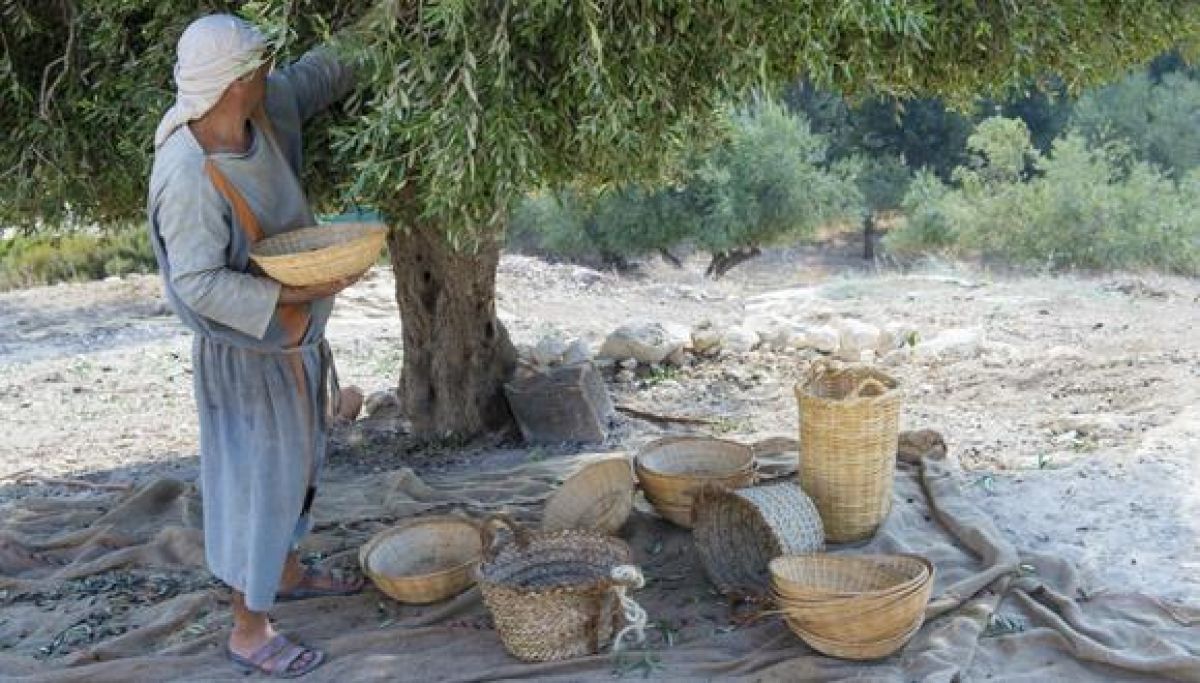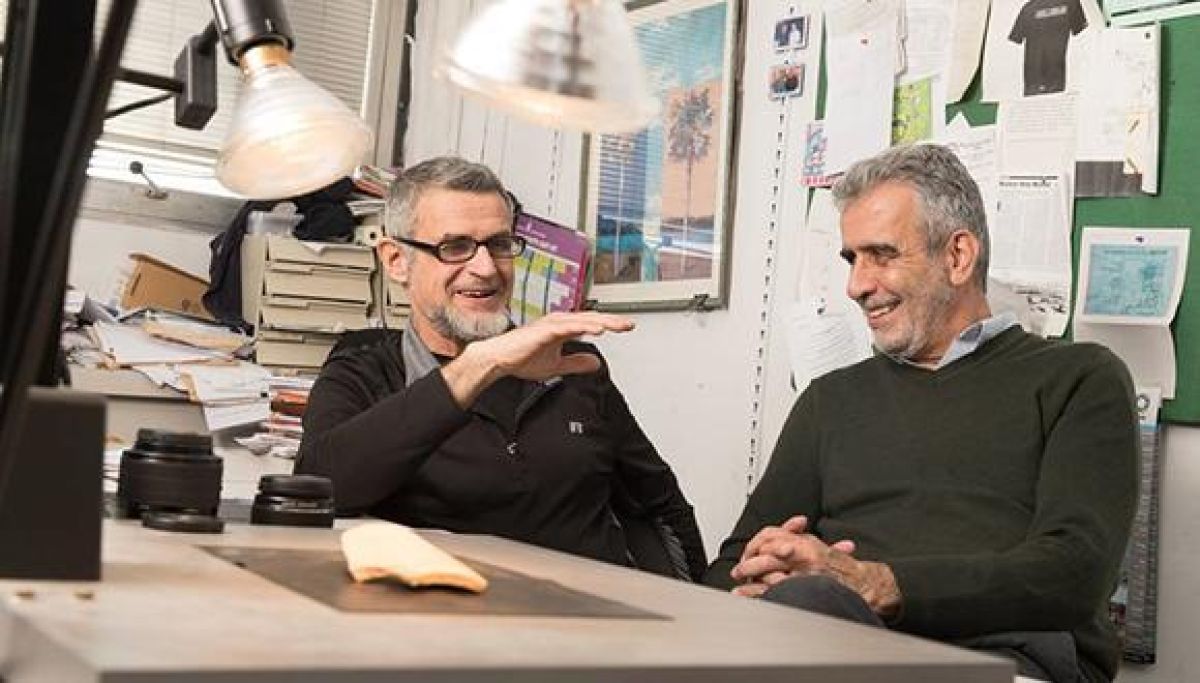Tag: Archeology
Early Humans Deliberately Recycled Flint To Create Tiny, Sharp Tools
Exceptional conditions at Israel’s Qesem Cave preserved 400,000-year-old “tool kit,” TAU researchers say
A new Tel Aviv University study finds that prehistoric humans “recycled” discarded or broken flint tools 400,000 years ago to create small, sharp utensils with specific functions. These recycled tools were then used with great precision and accuracy to perform specific tasks involved in the processing of animal products and vegetal materials.
The site of Qesem Cave, located just outside Tel Aviv, was discovered during a road construction project in 2000. It has since offered up countless insights into life in the region hundreds of thousands of years ago.
In collaboration with Prof. Cristina Lemorini of Sapienza University of Rome, the research was led jointly by postdoctoral fellow Dr. Flavia Venditti in collaboration with Profs. Ran Barkai and Avi Gopher. All three are members of TAU’s Department of Archaeology and Ancient Near Eastern Cultures. It was published on April 11 in the Journal of Human Evolution.
In recent years, archaeologists working in caves in Spain and North Africa and digs in Italy and Israel have unearthed evidence that prehistoric people recycled objects they used in daily life. Just as we recycle materials such as paper and plastic to manufacture new items today, early hominids collected discarded or broken tools made of flint to create new utensils for specific purposes hundreds of thousands of years ago.
“Recycling was a way of life for these people,” Prof. Barkai says. “It has long been a part of human evolution and culture. Now, for the first time, we are discovering the specific uses of the recycled ‘tool kit’ at Qesem Cave.”
Exceptional conditions in the cave allowed for the immaculate preservation of the materials, including micro residue on the surface of the flint tools.
“We used microscopic and chemical analyses to discover that these small and sharp recycled tools were specifically produced to process animal resources like meat, hide, fat and bones,” Venditti explains. “We also found evidence of plant and tuber processing, which demonstrated that they were also part of the hominids’ diet and subsistence strategies.”
According to the study, signs of use were found on the outer edges of the tiny objects, indicating targeted cutting activities related to the consumption of food: butchery activities and tuber, hide and bone processing. The researchers used two different and independent spectroscopic chemical techniques: Fourier transform infrared spectroscopy (FTIR) and scanning electron microscopy coupled with energy dispersive X-ray spectroscopy (SEM-EDX).
“The meticulous analysis we conducted allowed us to demonstrate that the small recycled flakes were used in tandem with other types of utensils. They therefore constituted a larger, more diversified tool kit in which each tool was designed for specific objectives,” Venditti says.
She adds, “The research also demonstrates that the Qesem inhabitants practiced various activities in different parts of the cave: The fireplace and the area surrounding it were eventually a central area of activity devoted to the consumption of the hunted animal and collected vegetal resources, while the so-called ‘shelf area’ was used to process animal and vegetal materials to obtain different by-products.”
“This research highlights two debated topics in the field of Paleolithic archaeology: the meaning of recycling and the functional role of small tools,” Prof. Barkai observes. “The data from the unique, well-preserved and investigated Qesem Cave serve to enrich the discussion of these phenomena in the scientific community.”
“Our data shows that lithic recycling at Qesem Cave was not occasional and not provoked by the scarcity of flint,” Venditti concludes. “On the contrary, it was a conscious behavior which allowed early humans to quickly obtain tiny sharp tools to be used in tasks where precision and accuracy were essential.”
The researchers are continuing to investigate prehistoric recycling by applying their analysis to other sites in Africa, Europe and Asia.
Photo caption: Experimental activity of cutting tubers with a small recycled flake and a close-up of its prehension (inset). Photo credit: Flavia Venditti.
New evidence points to existence of Biblical figure
A line of the Mesha Stele inscription lends credence to the story of Balaam in the Book of Numbers, Tel Aviv University researchers say
Learning from the “squeeze”
No longer the “House of David”
A match made in Megiddo
How the chemistry between archaeology and physics researchers led to groundbreaking discoveries about biblical history
Sometimes when you’ve stopped looking for a solution is exactly when it pops up. Israel Finkelstein, Jacob M. Alkow Professor of the Archaeology of Israel in the Bronze and Iron Ages, Sonia and Marco Nadler Institute of Archaeology, discovered a very interesting finding in 1998, at the archaeological excavation of Megiddo. He noticed a dig participant who did not quite fit the profile of a typical university undergraduate.
“I sniffed around and learned that this particular student was actually a TAU professor flying under the radar. He turned out to be a very important ‘find,’” smiles Finkelstein. That student, incumbent of the Wolfson Chair in Experimental Physics Eli Piasetzky, Raymond and Beverly Sackler Faculty of Exact Sciences, was pursuing a degree in archaeology. Prof. Finkelstein pulled him aside to talk, and so began a research partnership that is still active two decades later.
When were early Biblical texts written?
The archaeological issue of the day was mapping the chronology of the Iron Age in ancient Israel. Finkelstein challenged Piasetzky to improve the dating of remains from biblical times by using the radiocarbon method. The findings, published in professional and lay publications worldwide, rendered a new timeline of ancient Israel with lasting ramifications for biblical studies.
“Until then, the dating of texts was based on Biblical considerations,” explains Prof. Finkelstein, adding, “You can say that Biblical history was the path of the researchers, and archeology was used as a tool to prove the Bible stories were true.” He said. His article caused an uproar among researchers around the world, and he realized that he needed a more accurate dating tool and a talented mathematician to help him. Prof. Finkelstein presented his friend with a challenge – to accurately date the findings discovered in the excavations and to prove his claims.
Using the radiocarbon dating method on hundreds of items collected and tested, Prof. Piasetzky and Prof. Finkelstein presented a new and more accurate timeline in the history of ancient Israel, which was published in the New York Times, and had long-term implications for the study of the Biblical period since then.
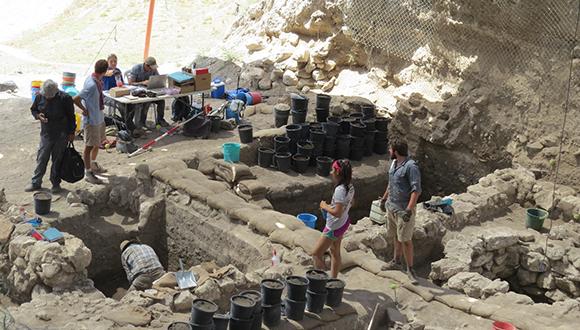
The excavation site at Tel Megiddo, where it all began
Algorithms for reading ancient inscriptions
Prof. Piasetzky and Prof. Finkelstein continue their quest to reconstruct ancient history. As reported by The New York Times, they are conducting analyses to help better decipher ink inscriptions on potsherds, known as ostraca that were unearthed at an ancient fortress in the deep desert of Arad in southern Israel.
“The citadel of Arad stands like a time capsule: Active about 2,600 years ago, it was a relatively short-lived, godforsaken outpost, a five-day journey from Jerusalem, populated by maybe 30 soldiers,” describes Finkelstein. “Who inscribed the potsherds found there? Who read them? The ostraca teach us about government and about literacy in ancient Judah. If we determine when writing became a tool used by a wide swathe of society, we can shed light on when early Biblical texts were written.”
A shopping list from thousands of years ago
Prof. Piasetzky and Prof. Finkelstein have put together a team of archaeologists, historians, physicists, mathematicians, and computer scientists to analyze handwriting and determine just how many hands penned the Arad ostraca.
To do so, they employ physics techniques of multispectral imaging to reveal inscriptions and improve readability. Next, they compare handwriting by using algorithms specially developed by the team. What they found there was surprising: the new lines discovered were a letter requesting the issuance of wine and food from the warehouses of the Tel Arad fortress to one of the military units in the area. The recipient of the letter was the warehouse clerk, while the address was an officer from Beersheba.
Beyond the information about what people used to eat and drink during that time, the researchers revealed that even quartermasters knew how to read and write, and also learned a few new words that don’t appear in the Bible. “From the content of the letters we learn that literacy permeated even the low ranks of the military administration of the kingdom. If we extrapolate this data to other areas of Judea, and assume that this was the case in the civil administration and among the clergy, the level of literacy is considerable. This level of literacy is a reasonable background for the composition of Biblical texts,” explains Prof. Finkelstein.
Facing the future
After studying the past, Prof. Finkelstein and Prof. Piasetzky explain what can be done with these special technologies in the 2000s. “One may ask why a student of mathematics would be interested in developing tools for handwriting analysis of ancient inscriptions,” Prof. Piasetzky says. “But this type of analysis is also acutely needed today by, say, lawyers, banks, and the police. Furthermore, we’re finding solutions for the challenges of deciphering ink inscriptions found on uneven clay surfaces with faded markings and missing pieces. If our algorithms can analyze decayed inscriptions, think what they can do with modern-day handwriting on flat clean paper surfaces.”
Prof. Finkelstein adds: “With handwriting we face a problem of subjectivity. Scholars – all of us – come with preconceptions. We can convince ourselves that we see this or that particular letter. The computer does not have preconceptions. It measures length of strokes and angles, making numerical comparisons. Our next step is to integrate multispectral imaging at digs. This could dramatically improve excavation methodologies by determining on site if a potsherd is treasure or junk. One inscription can change the way we understand history.”
Featured image: Prof. Eli Piasetzky and Prof. Israel Finkelstein talk about how it all started

